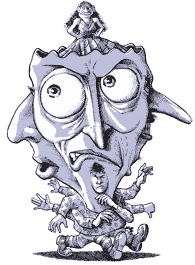Laid up with gout today, and for the past four days–the most serious attack I’ve had in a while; I could barely walk on Thursday and Friday–but today is the first day my head feels clear enough that I can get some work done. I’ve been watching TV and reading to distract myself, and so this seemed like a perfect time to start a “What I’m Reading” series of posts, which I’ve been wanting to do for a while.
- Via Fatemeh Fakhraie: Why Taylor Swift Offends Little Monsters, Feminists, and Weirdos. I don’t know Taylor Swift’s music–or, if I do, because I’ve heard in on the radio, I don’t know that I know it–but I enjoyed this analysis of her image and music.
- From Critical Mass: The Blog of the National Book Critics Circle Board of Directors, which is doing a series called “30 Books in 30 Days,” each day given over to an NBCC award nominee, this brief review of a biography of John Cheever made me want to read Cheever’s work again for the first time in a long time.
- Also from Critical Mass, this take on Louise Gluck’s new book, A Village Life. I have always liked Gluck’s work.
- I’d never heard of the poet Eleanor Ross Taylor, till I read this–yet one more from Critical Mass–appreciation of Captive Voices: New and Selected Poems, 1960-2008. She sounds like someone I could learn something from, not to mention I enjoyed the poems quoted in the piece. Now all I need is a semester with the time to do nothing but read.
- New York Times writer Katherine Bouton reviews two books about Mary Anning, The Fossil Hunter: Dinosaurs, Evolution and the Woman Whose Discoveries Changed the World, by Shelley Emling and Remarkable Creatures, by Tracy Chevalier. The first is a biography, the second is a novel. Here is Bouton’s lead: “Mary Anning was one of the few women to make a success in paleontology and one of the fewer still whose success was not linked to that of a paleontologist spouse (or any spouse: she was single). She made five major fossil discoveries from 1811 to her death in 1847 and many lesser ones. Why then is she best known as the inspiration for the tongue twister “She sells seashells by the seashore?”
- In the same issue of the Times, Denise Grady writes about the ethical issues that arise when doctors take cells from patients and then use those cells in research and, sometimes, in commercial ventures that make a whole lot of money. “A Lasting Gift to Medicine That Wasn’t Really a Gift” is a response to The Immortal Life of Henriette Lacks, by Rebecca Skloot. Henrietta Lacks was an African-American woman who died of cervical cancer in the 1950s, and Skloot’s book is an attempt to come to terms with both sides of an issue mired in questions of race, class, medical ethics and more: Lacks’ cancer cells, which were taken for analysis, went on to become a mainstay of modern medical research, being used in developing the first polio vaccine and in the development of drugs for diseases including Parkinson’s leukemia and the flu, and they not incidentally have made some people in the medical field very, very rich. Lacks’ family, who can’t even afford their own health insurance, has never seen a dime of that money. The story is not as simple a one of exploitation as that outline would suggest, which is why Skloot’s book sounds like it is worth reading, but so is Grady’s opinion piece.
- Due in 2013, the fifth edition of the Diagnostic and Statistical Manual of Mental Disorders, will contain some significant revisions that could result, according to Times reporter, Benedict Carey, in “fewer children [getting] a diagnosis of bipolar disorder[,] ‘[b]inge eating disorder’ and ‘hypersexuality’ [becoming] part of everyday language” and a significant change in the way many mental disorders are diagnosed and treated. This book is used to define the line between the so-called normal and the so-called abnormal; changes in it could have a profound impact, therefore, on society. It is, therefore, worth paying attention to.
- If any of you, like me, have gout, you want to know about GoutPal, the only informational site about gout that I have found–and it’s got a ton of information–that is not also trying to sell you something. I have glanced through it a couple of times, and I am beginning to realize that I need to read it. If you have gout, you probably should too.
- An opinion piece on Tehran Bureau that’s worth reading about how to understand what happened in terms of the Green Movement in Iran on February 11th: Were the Greens Defeated?
- Also from Tehran Bureau: Why North Tehranis Don’t Revolt: Why some people who clearly see the regime as “them,” don’t see the opposition as “us,” or at least not enough of an “us” that they are willing to risk joining the protests.



The whole rationale for “hypersexuality” disorder is crap. I really hate that 1) Therapists are asking for it? And 2) that the DSM sexuality section feels the need to put something into the DSM so that we may “study” it.
I’ll be damned. I’ve worked with HeLa cells. I had no idea.
Thanks for the mention, Richard.
If you only read some of it, please focus on getting uric acid under control. Get to know your number, preferably from regular visits to a knowing doctor. Find ways to keep that number below 6mg/dL.
It’s that simple. We have a helpful forum if it isn’t.
Gout? My sympathies. Husband has gout. Husband is less than good about taking medication regularly. There are no 24-hour pharmacies within reasonable driving distance of Yellowstone National Park.
Put those facts together, and you have the worst camping-trip incident since my attack of food poisoning while occupying the tent with the broken zipper. My mother’s tent.
Ledasmom: Thanks for the kind words, and I sympathize about the camping trip. Your husband should check out GoutPal; it is a treasure trove of information.
AmandaLP – reading the rationale on hypersexuality, it reads to me like clients are asking for it, which makes sense as “diagnosable” = “reimbursable by insurance.”
RJN, as a literary fellow, you may be interested in this article that I stumbled across and bookmarked a while back: “The glorification of gout in 16th- to 18th-century literature”
http://www.cmaj.ca/cgi/content/full/179/8/804
A nice find Ruth,
Curiously, it contains a section claiming gout having aphrodisiac properties, yet Mrs GoutPal’s constant complain is that the swelling only affects my joints.
Alas, I note that the article is courtesy of the Canadian Medical Association. My gout forum regulars from the Big Country believe this work represents current best practice.